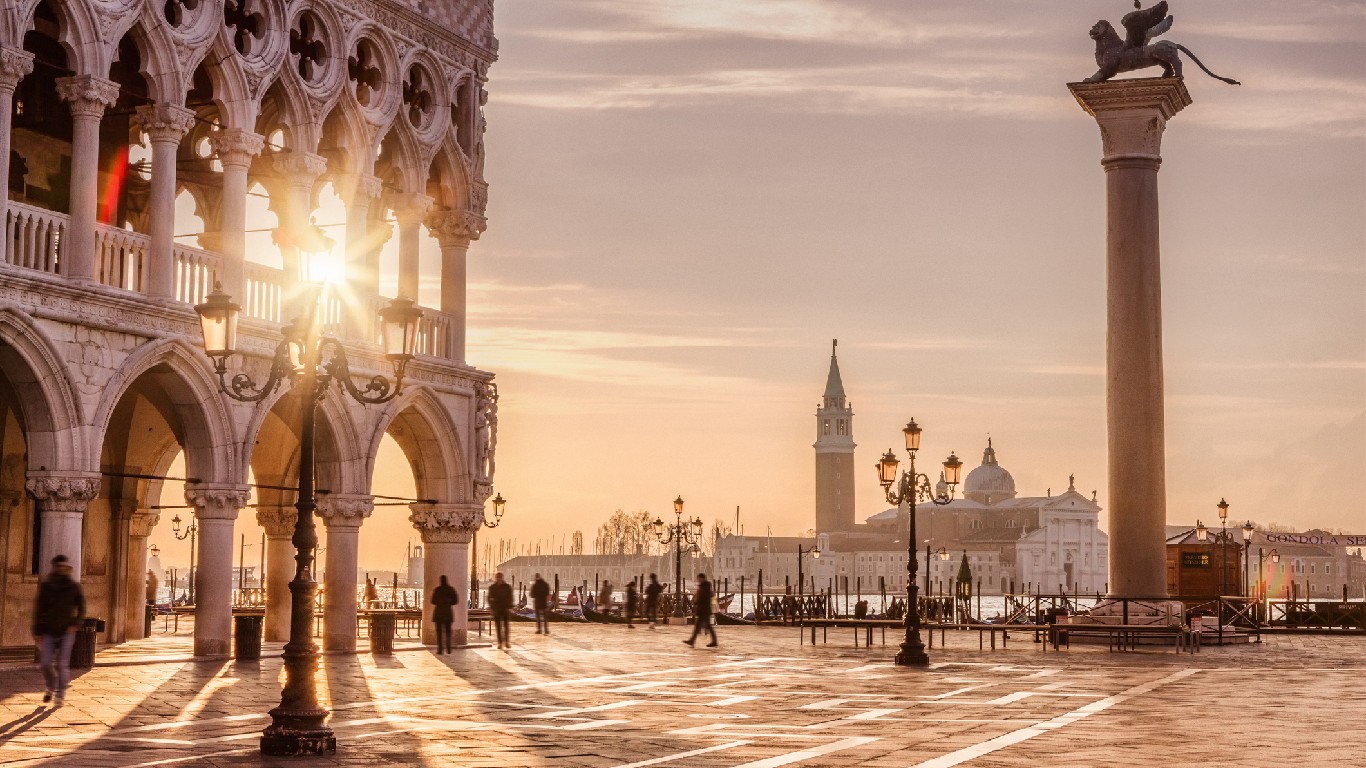
As the industrial revolution took hold, it was becoming apparent to many that the pollution emitted by industry could be damaging not only to human health, but to the built environment as well. Before it was completed, the builders of the Houses of Parliament could see that soot and pollutants were already degrading stone surfaces. In 1873, conservators in Florence, Italy, brought the 400-year-old statue of David indoors because it was discoloring and decaying outdoors.
The primary culprit in destroying landmarks since World War II has been acid rain, formed when emissions of sulfur dioxide, mainly from power plants, and nitrogen oxides, mainly from automobiles, combine with water to make sulfuric and nitric acids. Acid rain is very destructive to buildings and sculpture, particularly those built of marble and limestone, turning seemingly indestructible materials fragile, and causing surface areas to stain and flake away.
Fortunately, the environmental laws of the past 50 years have greatly reduced the threat of acid deposition by controlling chemical emissions from power generation, industry, and automobiles. While the United States, Canada, and Western Europe have ended significant acid rain damage, parts of the world are still struggling with the problem, particularly in Asia. China’s acid rain is actually getting worse because of the country’s heavy reliance on coal. (These are the 20 countries responsible for nearly all global emissions.)
Though the problem of acid is solvable, a far more serious environmental scourge is far less manageable and is beginning to cause irreversible damage to our cultural landmarks. Climate change is no longer a future threat, it is already impacting the built world, just as it is tragically plaguing human populations. (These are natural landmarks already damaged or destroyed by climate change.)
To find human-made landmarks damaged or destroyed by pollution or climate change, 24/7 Wall St. reviewed reports from several sources, including CyArk, a nonprofit organization that digitally archives significant cultural heritage, and UNESCO, a United Nations organization that, among other things, documents important cultural sites and the threats they face. Other sources we reviewed have particular expertise regarding environmental impacts on our cultural heritage, such as the Union of Concerned Scientists.
Whether from bigger, hotter forest fires in drying regions, flooding caused by storms and more intense rain events, or erosion and salt intrusion from storm surges and sea level rise, landmarks around the world are at risk, and many are already severely damaged.
Click here to see human-made landmarks climate change is destroying





